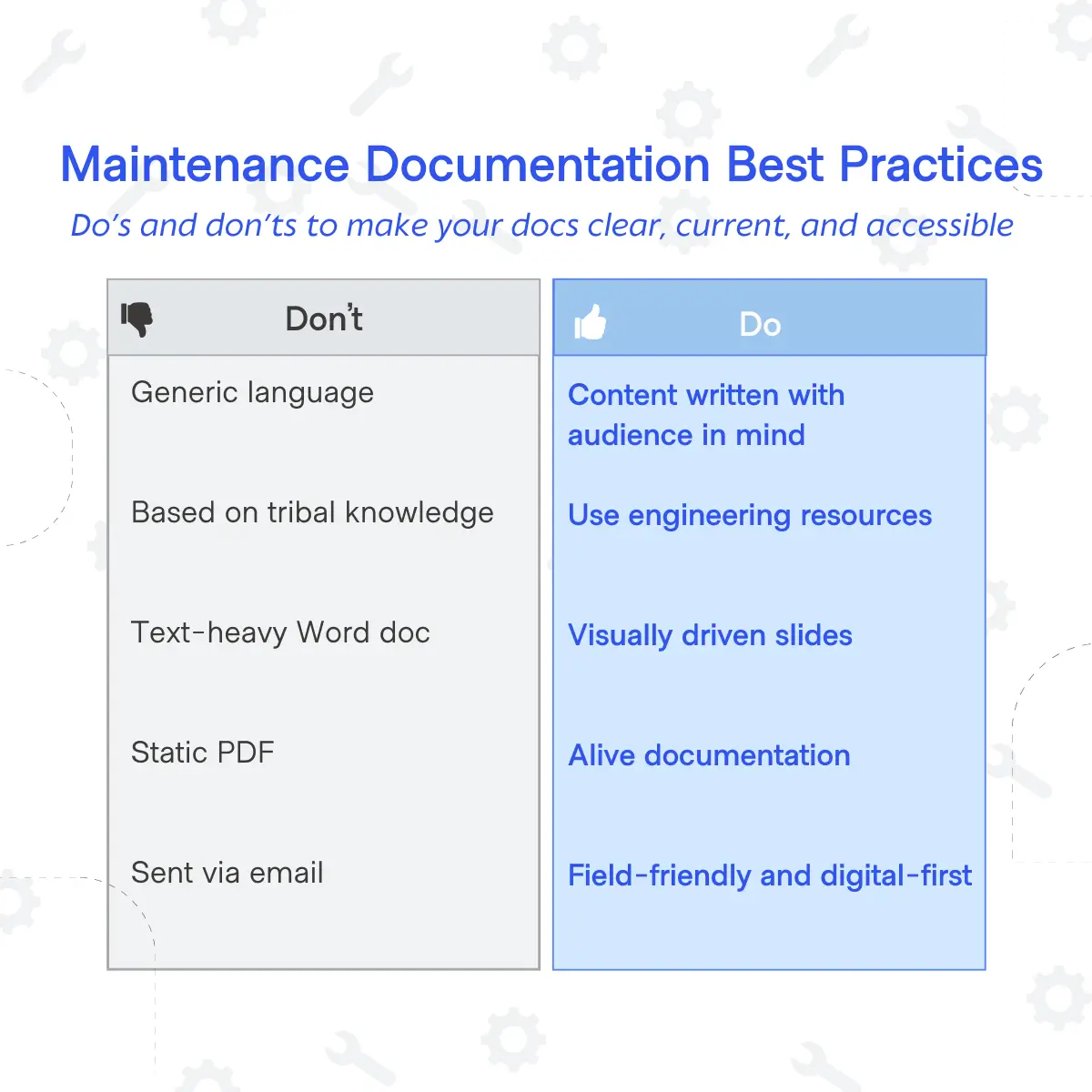In manufacturing, documentation is everywhere—work instructions, standard operating procedures (SOPs), maintenance checklists, troubleshooting guides. These documents are essential for safety, quality, and consistency.
But let’s be honest: they’re often hard to use. They might be technically accurate, but if they’re difficult to read, navigate, or apply on the job, they’re not doing their job. That’s where UX design comes in.
UX design is all about creating experiences that are easy, intuitive, and enjoyable for the end user. And while it's usually associated with apps and websites, its principles can dramatically improve the effectiveness of manufacturing documentation. Here’s what we can learn when we start treating documentation like a user interface.
1. Design for the User (Not the Author)
Engineers and technical writers often create documents with accuracy in mind—and that’s important. But the real test of a document is whether the person using it on the shop floor can quickly understand and apply it. Just like UX designers create interfaces based on user needs and behaviors, documentation should be written and formatted for its primary users: technicians, operators, and assemblers.
2. Prioritize Clarity Over Completeness
In UX, clarity trumps density. The same should go for documentation. It doesn’t need to include every possible detail—just the right ones to help someone take action safely and correctly. Use short sentences, plain language, and step-by-step formats. Highlight safety notes and decision points. Bullet points and visual callouts are your best friends.
3. Create Visual Hierarchy
A well-designed interface guides the user’s attention. Documentation should do the same. Use headers, subheaders, bold text, numbered steps, and whitespace to help readers scan and absorb information. Group related tasks and add icons or diagrams where helpful. Visual consistency across documents reduces cognitive load and speeds up comprehension.
4. Make It Accessible, Everywhere
Even the best instructions are useless if they’re hard to find. PDFs buried on shared drives or printed manuals stuffed in cabinets don’t cut it anymore. Make documentation digital, mobile-friendly, and easy to access from the point of use. Whether it’s on a tablet, workstation screen, or wearable device, the goal is simple: right info, right place, right time.
5. Iterate and Test
UX designers constantly test and refine their work based on user feedback. Manufacturing documentation should be no different. Observe how people use it, gather feedback, and revise it regularly. Treat documentation as a living product that evolves with your process.
Design Docs Like You’d Design a Product
Documentation is more than a compliance checkbox—it’s a tool that enables people to do great work. When you apply UX design thinking to your documentation, you turn static instructions into dynamic, user-friendly assets that support efficiency, quality, and safety. So go ahead: audit your docs, talk to your users, and start designing documentation with the same care you give your products. Your team (and your bottom line) will thank you.

.jpg)
.jpg)


